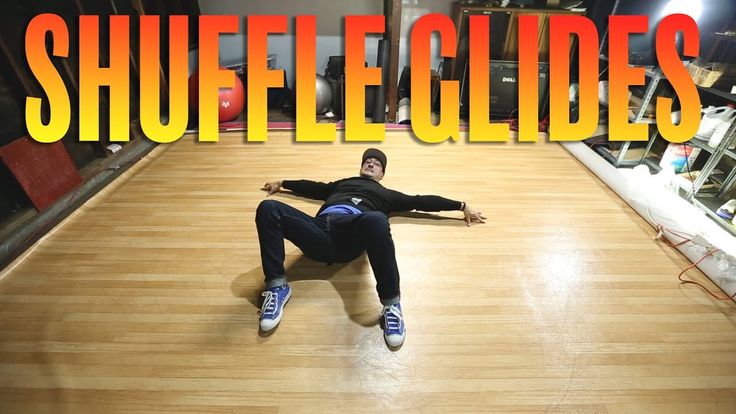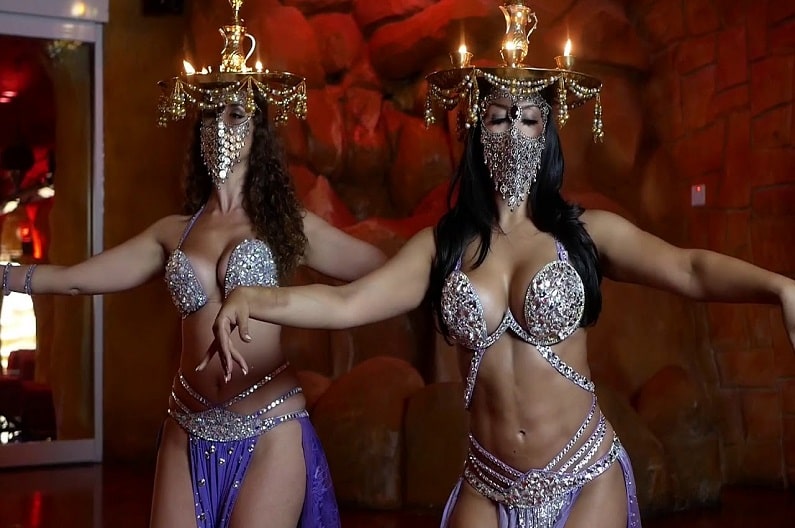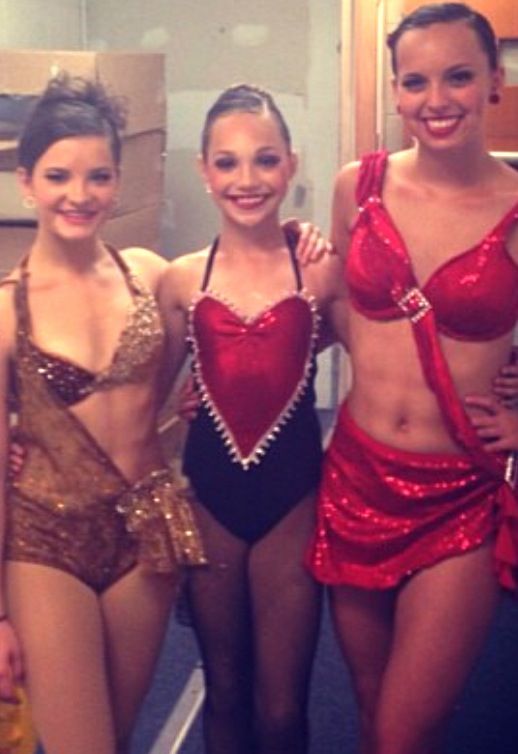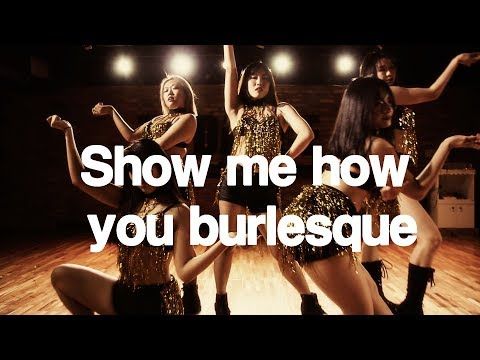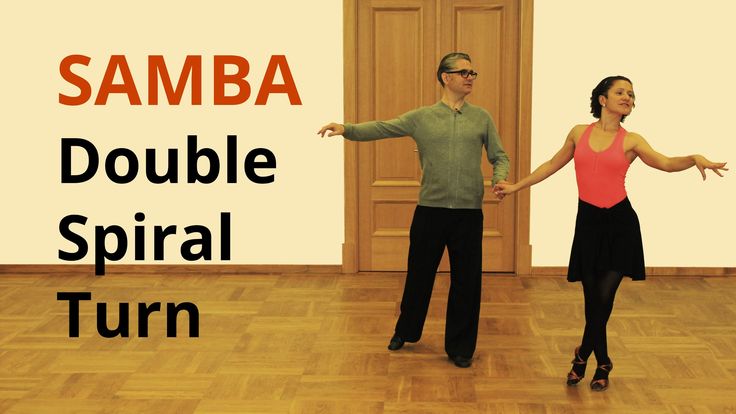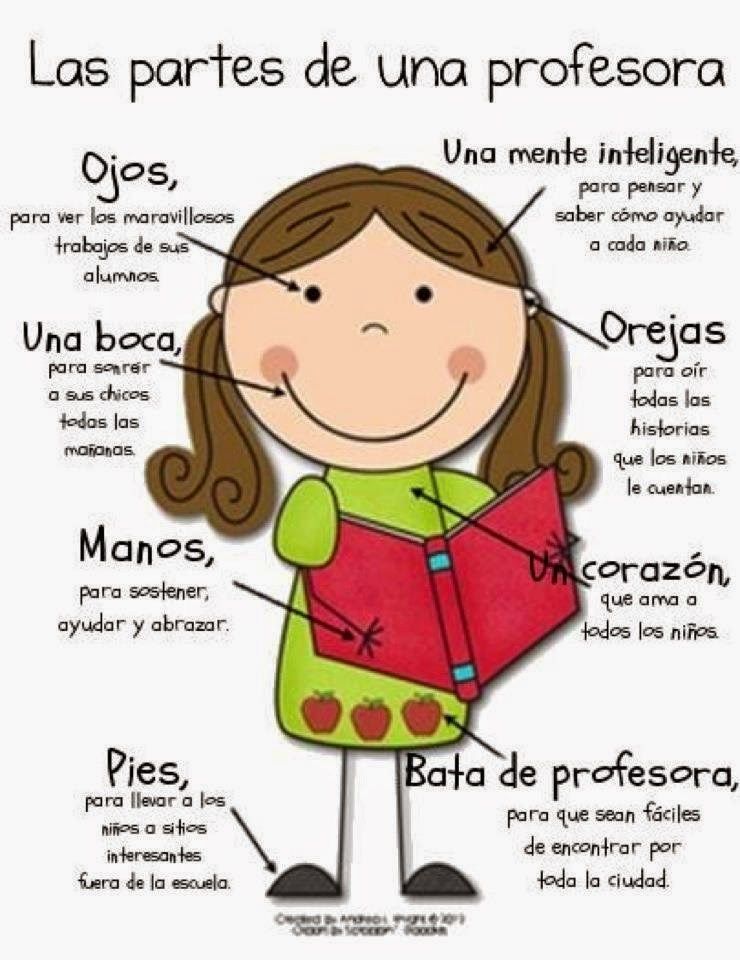Learn how to breakdance and rule the dance floor
What is Breakdancing?
Home>Sports>Breakdancing (Breaking)
PreviousNext
Breakdancing is an energetic style of street dancing that involves intricate body movements that range from head spins to stylized footwork. While competition has always been an important part of breakdancing culture, it only recently became acknowledged as a conventional sport when it became included in the upcoming 2024 Olympic Games. Although breakdancing only recently became formally recognized as a sport, the athletic style of dance has a unique history that dates back several decades.
Table of Contents
- History
- Playing Surface
- Breakdancing Equipment
- Objectives
- Rules and Regulations
- Strategy
- Lingo
- Breakers
- Competitions
- Olympic Breakdancing
- FAQ
History
Breakdancing evolved from the hip-hop movement that sprung out of New York City in the early 1970s. Because breakdancing is largely improvisational, emphasis is placed on creativity, movement, and an element of danger that conveys the rough world of the city streets from which it evolved. Breakdancing reached a greater audience in the 1980s when mainstream artists such as Michael Jackson adopted the dance form. In 2020, the International Olympic Committee approved breakdancing as a sport at the 2024 Olympics in Paris.
Playing Surface
Breakdancing can be performed practically anywhere, but it is believed to have originated in the streets of the Bronx in New York City. Thus, breakdancing is widely considered a form of street dancing. Nowadays, breakdancing is commonly performed on slip-resistant floor mats that allow dancers to safely perform moves while avoiding injuries.
Breakdancing Equipment
There isn’t much equipment needed to breakdance. In fact, breakdancing can be done anytime and anywhere without prior preparation. However, there are a few items that can make the breakdancing experience more enjoyable.
Here is the essential breakdancing equipment you should have:
- Comfortable clothing: Loose, flexible clothing such as sweatpants and T-shirts are ideal for breakdancing
- Elbow and knee pads: Useful for performing moves that involve the elbows or knees
- Skateboard helmet: Great for performing headspins
- Slip-resistant mat: to prevent injuries
- Wrist wraps: Ideal for dancers with weaker wrists
Objectives
Competitions, otherwise known as battles, are an essential part of breakdancing culture. The winners of breakdancing battles are determined by judges, who look for elements such as musicality, the difficulty of movement, character, personality, style, execution, and originality when evaluating dancers. Although there are formal breakdancing competitions today, in the early days breakdancing battles were often held to settle disputes between gang members in the Bronx.
The winners of breakdancing battles are determined by judges, who look for elements such as musicality, the difficulty of movement, character, personality, style, execution, and originality when evaluating dancers. Although there are formal breakdancing competitions today, in the early days breakdancing battles were often held to settle disputes between gang members in the Bronx.
Rules and Regulations
In each breakdancing battle, rules may vary, but the breakdancing community widely adopts a few guidelines.
Here are the most important breakdancing rules you should know:
- Battles can be performed between two individual dancers or between crews that can include up to ten dancers and sometimes more
- Individuals, or crews, take turns performing in the middle of the dance floor
- Competitions are usually held in a tournament style where the winner goes on to the next round and the loser is knocked out
- This goes on until there are two dancers or crews left, at which point a final battle is held to determine the winner
Strategy
There are certain components that breakdancers focus on when trying to stand out to judges.
Here are the most important breakdancing strategies you should know:
- Foundation: Demonstrating the basic fundamentals of the dance including rock steps, go downs, footwork, freezes, power moves and transitions
- Difficulty of movement: Putting together extremely difficult moves and combinations that involve intricate footwork, patterns, and flow
- Personality: Demonstrating a unique personal flavor that makes dancers stand out from their opponents
Lingo
Here is the common lingo and slang in breakdancing:
- B-boys/B-girls: Individuals who practice breakdancing and participate in the hip-hop culture and lifestyle
- Breaker: Short for breakdancer
- Throwdown: When a B-boy or B-girl hits the floor and starts breaking
- Cypher: A circle that breakdancers form and dance in the middle of
- Cypher cat: A breaker who’s very talented at performing in cyphers
- Crashing: Failing an attempted move
- Biting: Stealing or copying the moves of another breakdancer
- Set: A breaker’s prepared round or combination of moves
Breakers
Here are the most famous breakdancers you should know:
- Crazy Legs: One of the most popular and important breakers, Crazy Legs was a pioneer of the dance movement in its early days
- The Zulu Kings: One of very first breakdancing crews, the Zulu Kings won a lot of battles and performed at many talent shows and clubs in the 1970s
- Rock Steady Crew: One of the most highly recognized names in the world of breakdancing, Rock Steady Crew was formed in 1977 in the Bronx
Competitions
Here are the most popular competitions in breakdancing:
- Red Bull BC One: This is the most prestigious one-on-one breakdancing competition in the world.
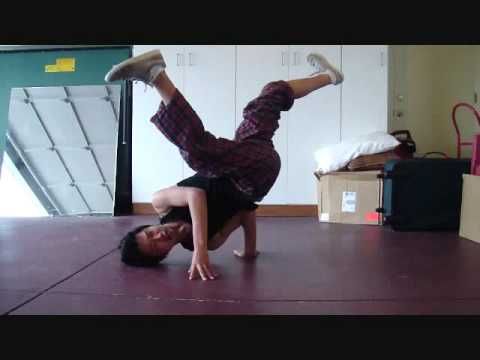 Since 2004, Red Bull BC One has hosted World Finals competitions in major cities around the world.
Since 2004, Red Bull BC One has hosted World Finals competitions in major cities around the world. - World B-Boy Series: This is a breakdancing championship series established in 2013 that features some of the most renowned solo breakers around the world. The series typically culminates in a masters event called the “Undisputed Masters”, which is held to determine the “undisputed” breakdancing champion.
Olympic Breakdancing
Breakdancing will make its debut as an Olympic sport at the 2024 Olympics in Paris. It remains to be seen how the Olympic version of breakdancing will play out, but much of the breaking community has expressed support for its inclusion at the Olympics. However, some breakers are concerned that breakdance culture will lose its authenticity as it enters the mainstream. Others fear that Olympic judges might value technical difficulty over intangible qualities that make breaking unique such as style and creativity.
FAQ
Who invented breakdancing?
It is difficult to attribute the creation of breakdancing to a single individual, but DJ Kool Herc certainly helped pioneer the movement. DJ Kool Herc was a Jamaican deejay in New York who came up with the idea to mix percussion breaks from different records. The result was a continuous dance beat that provided a rhythm for B-boys and B-girls.
DJ Kool Herc was a Jamaican deejay in New York who came up with the idea to mix percussion breaks from different records. The result was a continuous dance beat that provided a rhythm for B-boys and B-girls.
When was breakdancing most popular?
While breakdancing was popular in the hip-hop community in the 1970s, breaking entered the mainstream in the 1980s when it was popularized by artists such as Michael Jackson. Additionally, the rapid growth of dance teams such as Rock Steady Crew brought massive media attention to the dance form.
PreviousNext
Pages Related to What is Breakdancing?
- Breakdancing (Breaking)
- Top 6 Best Men's Breakdancers of All Time
- Top 5 Breakdancing Movies
PreviousNext
Breaking rules, moves and format
Loading...
Breakdancing was part of the 2018 Youth Olympics and is a medal event at Paris 2024.
(Picture by 2013 Red Bull)From the streets of New York in the 1970s to the grand stage of the Olympic Games, breaking has charted a course not many would have thought was possible.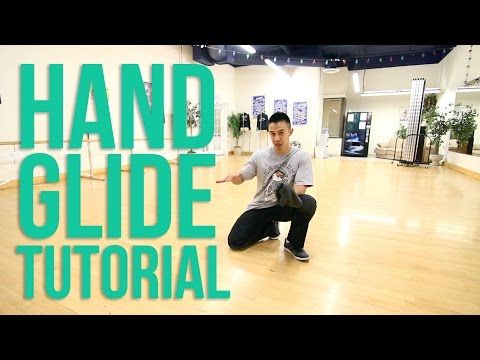
Breakdancing, as breaking is popularly known, is a form of dance sport that blends urban dance with remarkable athleticism, making it worthy of a spot in the Olympic programme.
And after its successful introduction at the 2018 Youth Olympics in Buenos Aires, breaking is set to make its big Olympic Games debut at Paris 2024.
However, unlike its beginning on the streets, breaking has evolved into a proper dance sport, with a fixed set of rules that make for fair competition.
Breaking moves
But, before we dive into the breakdancing rules, let’s look at the three basic elements that make up breaking – top rock, down rock and freeze.
Top rock refers to all moves that are performed while standing up - generally a combination of stylish hand movements and footwork whereas freeze is when the breaker comes to a standstill in an unusual position (on their head or hands) in the middle of their routine.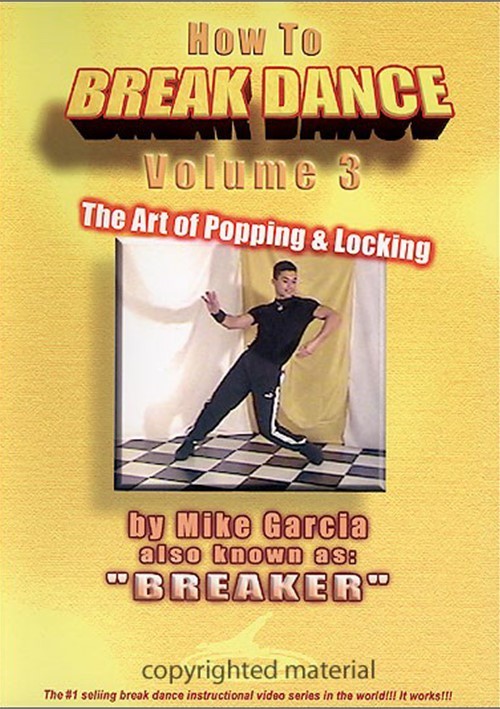
But the most crucial and often the highlight of the performance is the down rock, which involves all moves done on the floor. It features spins, footwork, transitions and, most importantly, power moves.
Power moves are a complex set of movements the breakers showcase by spinning their whole body on hands, elbows, back, head or shoulders. The gravity-defying, acrobatic movements require superior strength, balance and flexibility.
For instance, the air flare power move requires dancers to rotate their body, whilst upside down, while alternating their balance on either arm and moving in a circular path.
Meanwhile, flare is a common acrobatic move that is also done by gymnasts. It involves balancing the torso on alternating arms and swinging the legs underneath in circles.
Alexander Artemev of the USA performing a flare. (2007 Getty Images)Breakers combine all three elements in their routine on beats provided by a hip-hop DJ when facing each other in a one-on-one competition called a battle.
Breaking battle format
Athletes, or breakers, as they are called, go up against each other in a 1 vs 1 battle and take alternate turns or throw downs to perform their routines.
A battle generally features a fixed number of sets from all breakers. Most major competitions, like the Red Bull BC One, have either two or three throw downs until the final, which has three or five throw downs.
Moreover, each throw down cannot be longer than 60 seconds but there are no penalties for performing too short or too long.
Each battle is conducted in front of a panel of judges, which usually comprises respected dancers from the breaking community. The judges rate each performance on clearly defined criteria.
Breaking judging criteria
A minimum of three or more uneven number of judges score the battles on six criteria - creativity, personality, technique, variety, performativity and musicality.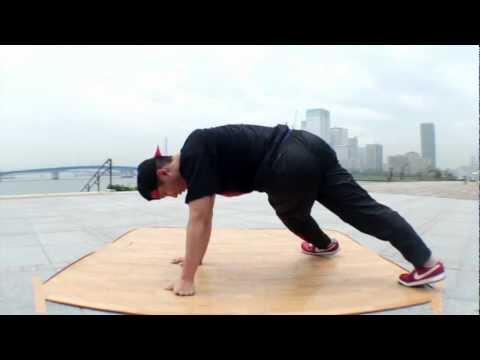
Each parameter has different weightage in a battle, with technique, performativity and creativity constituting 60 per cent of the total score while variety, musicality and personality make up the remaining 40 per cent.
The judges submit their votes after each round and the breaker with the highest points is declared the winner.
At the 2018 Youth Olympics, the judging panel comprised five judges.
Breaking at Paris 2024
Breaking was added to the 2024 Paris Olympics medal programme, along with other youth-centric events like skateboarding, surfing and sport climbing, which form an integral part of today’s culture.
There will be separate competitions for men and women, where the best 16 B-Boys and 16 B-Girls of the world will face off in solo battles.
And undoubtedly, we will get to see the new generation of Olympic stars arise in Paris from a movement that started half a century ago in New York.
Add this to your favouritesINDYou May Like
How to learn to breakdance - DanceStudioDanceStudio
How to learn to breakdance
One decision to "learn to breakdance" already says about you that you understand quality, are not afraid of difficulties and the day and night ready to work on themselves. If this is not the case, then perhaps you are not aware of something. There are two fundamental break directions - low and high. Upper breakdance has many different subspecies, but they all have in common - the highest quality and attention to detail, aerobatics in mastering the technique. Therefore, in order to learn how to dance upper breakdance, you must be ready to work out the same element for hours, days, weeks, months, and even years - like in ballet. To do this, you must have plenty of free time and an unwavering passion for breaking. Otherwise, your classes will be something like an entertainment show instead of an evening portion of serials, and this will not lead to any significant result.
Upper break can be practiced at any age, it is not dangerous to health, on the contrary, it is useful.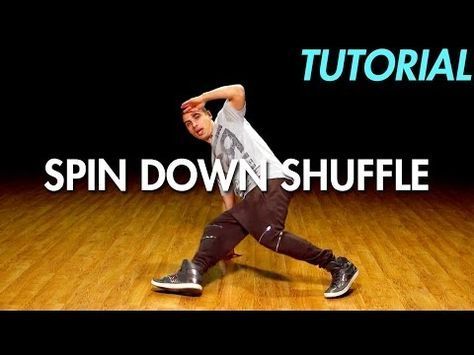 It distributes the load on all muscle groups with sufficient quality, therefore, from the point of view of “physical education”, you can always rely on it. For an adult, this should be much more interesting than stupid fitness exercises, because dance is, after all, an art! But from the point of view of “really achieve a result,” for an adult without preparation, this is a dead number. Breakdance requires muscle tone, without it you will not be able to cope with any basic element, especially with “fixation”. It will take many months to restore the muscle tone that has gone over the years, even with hard work for many hours a week. A rare adult client is ready to give up everything and go into the depths of breakdancing, if he is not in excellent athletic shape. There must be some special incentive for this: for example, a bet on a million bucks.
It distributes the load on all muscle groups with sufficient quality, therefore, from the point of view of “physical education”, you can always rely on it. For an adult, this should be much more interesting than stupid fitness exercises, because dance is, after all, an art! But from the point of view of “really achieve a result,” for an adult without preparation, this is a dead number. Breakdance requires muscle tone, without it you will not be able to cope with any basic element, especially with “fixation”. It will take many months to restore the muscle tone that has gone over the years, even with hard work for many hours a week. A rare adult client is ready to give up everything and go into the depths of breakdancing, if he is not in excellent athletic shape. There must be some special incentive for this: for example, a bet on a million bucks.
It's different if you're not young anymore, but you're a professional dancer. No matter how old you are, you always strive to improve your result, achieve new heights, do something outstanding. In this situation, I dare to believe that you have muscle tone in full succession, then you simply have to learn how to dance break dance, at least its basics on the “top”. The latest trend is a mixture of styles. Even strip plastics are mixed with break elements to give the dance a better, more technical look. Break dance techniques can be considered the most difficult in modern dances, and therefore the coolest. If you declare that you are a cool dancer, you must at least fix it well, otherwise your self-esteem is inadequate.
In this situation, I dare to believe that you have muscle tone in full succession, then you simply have to learn how to dance break dance, at least its basics on the “top”. The latest trend is a mixture of styles. Even strip plastics are mixed with break elements to give the dance a better, more technical look. Break dance techniques can be considered the most difficult in modern dances, and therefore the coolest. If you declare that you are a cool dancer, you must at least fix it well, otherwise your self-esteem is inadequate.
As for the lower break, this is a dance style for young people, and in order to learn how to dance the lower break dance, you need to practice from adolescence, or better, from early childhood (while the body is ready for powerful loads and bone tissues grow together relatively quickly). The bottom break is dance acrobatics, one of the most traumatic sports. This is not only an art, but already a sport. In the lower break, there are basic dance elements that everyone must know.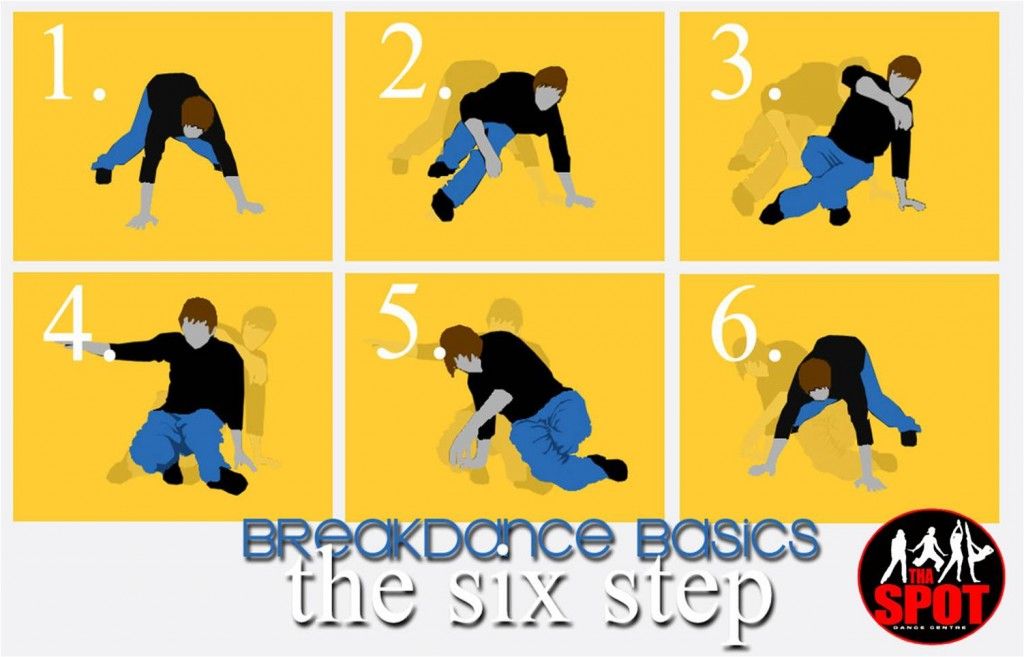 In battles, they compete in the quality of the implementation of these elements, the degree of their complexity and the creativity of their use. One wrong move can cause irreparable damage to health. Giving the child to learn to dance the lower break dance, parents need to be prepared for this. An adult should understand that breakdance classes can be a real test for his brain, because their music is extremely specific, with sharp, sharp sounds. Dub Step is more like a renovation than a piece of music. It’s easier for young people, their perception is not yet so sensitive, for an adult it can turn out to be a real bad trip.
In battles, they compete in the quality of the implementation of these elements, the degree of their complexity and the creativity of their use. One wrong move can cause irreparable damage to health. Giving the child to learn to dance the lower break dance, parents need to be prepared for this. An adult should understand that breakdance classes can be a real test for his brain, because their music is extremely specific, with sharp, sharp sounds. Dub Step is more like a renovation than a piece of music. It’s easier for young people, their perception is not yet so sensitive, for an adult it can turn out to be a real bad trip.
B-boy performances are incredibly spectacular shows. They are admired by everyone without exception, so many seek to try themselves in this field and snatch some of the laurels. The most popular films about dance are necessarily with the participation of breakers. Breakdance is rooted in the circus art of illusion and pantomime. This is the art of manipulating the viewer's attention. In other words, break is a symbiosis of clowning and dance. The main distinguishing feature of a cool breaker is the mastery of acting. They truly go out of their way to give out a spectacle that the world has never seen before. There is no limit to their imagination and courage. If you are not ready to surpass Jim Carrey in manipulating the muscles of the face, this is not your business to “break”.
In other words, break is a symbiosis of clowning and dance. The main distinguishing feature of a cool breaker is the mastery of acting. They truly go out of their way to give out a spectacle that the world has never seen before. There is no limit to their imagination and courage. If you are not ready to surpass Jim Carrey in manipulating the muscles of the face, this is not your business to “break”.
Today's breakers have a hard time: in the face of crazy competition, you have to be smart. As in music - everything has already been played and it is catastrophically difficult to give out something new and ingenious, also in dance. Therefore, in order to be noticed, you need to learn how to dance break dance not in the old school. An example of the aerobatics of the new break can be considered the favorites of the scene "Le Twins". To say that they are moving cool, even the language does not turn. Brothers «Le Twins» are trendsetters, their performances are masterpieces! No one has ever shown such juggling styles, not a single “correct” movement, everything is distorted, in one second they can fall and stand up without touching the floor with their hands, lightning speeds, unpredictable contrasts - this is modern breakdance! Against the background of such guys, all those people who show an even wave with their hands with the transition to the body are an anchor in the past, but throwing tomatoes is no longer fashionable. To become a great breaker, you need to be born and work all your life.
To become a great breaker, you need to be born and work all your life.
However, there are also simplified forms of the top break that have nothing to do with battles, competitions and all the other history that you read. This is an adapted break for use on a dance floor at regular parties. There are no memorized productions and ready-made dances. This is a set of individual elements and techniques, embedded in the usual modern dance in the improvisation mode, which is performed to any music. There is no particular claim to exceptional quality. There is a methodology and a training system when you can use movements immediately after the first lesson, and then gradually develop quality, raising the level. But initially it will immediately look good, quite acceptable for the dance floor. This makes it possible, without going deep into the years of study, to immediately obtain a technique applicable in practice. In addition, no one bothers you to snatch the chips you like from the dancers, work them out on your own at home, and then insert them into the dance. This, by the way, is one of the easiest and most effective ways to learn how to breakdance - you choose only what you like and don't waste time memorizing an entire dance that can't be used on the dance floor.
This, by the way, is one of the easiest and most effective ways to learn how to breakdance - you choose only what you like and don't waste time memorizing an entire dance that can't be used on the dance floor.
The best in the field of "dance-floor breakdance" - Max Adams, a brilliant choreographer and author of teaching methods in the field of modern dance. Check out what it looks like
FOCUS. Pulse beats bit | Sovetsky and Yugorsk
Tricks in a limited space, virtuoso twisting on the arms and head, expressive delivery. When you see breakdance dancing, only emotions arise. How break has been transformed from underground culture into modern choreographic art, what makes street dances attractive for the youth of Sovetsky and Yugorsk, and what success local b-boys and b-girls have achieved on the country's popular dance floors - in the material of the news agency "2 CITIES".

Saturday evening. In the hall of the sports complex "Kedr" it is unusually lively and atmospheric. True, today they do not play football here. Today they dance break-dance here. Instead of the usual whistle - a loud beat. Instead of game moments - only dance and own feelings. At first glance, it seems that this is not even a training at all, but some kind of experimental performance. Such a lively, relaxed and creative atmosphere reigns in the hall. But no matter how it is… Freedom of movement, the ability to choose and avoid the rules are just an integral part of the training process.
“You don't pay attention to some chaos, ,” Anton Goncharov, teacher of the “Boom” breakdance school, comments on the situation on the dance floor when he sees me, “ the guys just have freedom of creativity now. Those who are older set the rhythm, the pace. Create an atmosphere in your square. Freestyle" .
Freestyle, to put it more clearly, is like an essay on a free topic. The scope and flight of the soul. Indeed, several dance zones have already formed on the site. The more experienced guys first practiced toprock (dancing) while standing, something that always starts with b-boying (break-dance performance), and then they began to demonstrate with might and main elements that only a trained b-boy can repeat.
The scope and flight of the soul. Indeed, several dance zones have already formed on the site. The more experienced guys first practiced toprock (dancing) while standing, something that always starts with b-boying (break-dance performance), and then they began to demonstrate with might and main elements that only a trained b-boy can repeat.
The sight, I tell you, is amazing. Especially when professionals are already in business. The body resists, gravity pulls downward, and they again jump under the ceiling and swing along the floor.
- What force gives you freedom of movement in the air? - I ask the guys.
- Training, desire, perseverance, - answer me.
- Improving the coordination of movements, making them light, clear and free, you can achieve a good result, - Trainer joins the conversation. – The world has changed, age is not important, level is important. Here is this child, for example. You can't say from him that he is capable of doing all these things, but he takes it and does it.
Five-year-old Rada Sazanova is only on her way to big tournaments. But now the girl clearly understands that her success will depend not only on her own desire, but also on hard work. So at the training, the dancer confidently demonstrates the twine, spins on her head, shows a path of steps. It seems like it's just walking, but it's usually just the beginning.
- In the future I want to learn how to do cool things, like Anton Alexandrovich, our coach, - completing my demonstration performance, says Rada.
— How soon do you think you will be able to do this?
— I think in 25 years.
A quarter of a century is, of course, a long time. True, teammates, as a rule, consider the prospects for the near future.
Olympic Skyrocket
For example, Davlad Shalaev sets himself Olympic goals. Let's clarify for those who may not know yet. The International Olympic Committee has included dance in the program of the 2024 Olympic Games in Paris.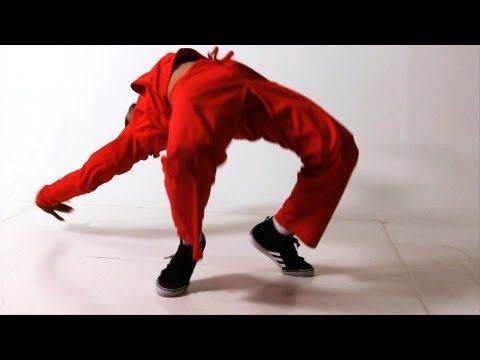 Previously, breakdancing competitions were held only at the 2018 Youth Olympic Games, where, by the way, eighteen-year-old Voronezh resident Sergey Chernyshev, nicknamed Bumblebee, became the first ever Olympic champion.
Previously, breakdancing competitions were held only at the 2018 Youth Olympic Games, where, by the way, eighteen-year-old Voronezh resident Sergey Chernyshev, nicknamed Bumblebee, became the first ever Olympic champion.
“Of course, I would like to get into the national team — tells Davlad about his intentions - and who doesn't want ? I will train hard. I am ready to spend all my strength and money just to achieve a result.”
Indefatigable ambitions for the championship - it's more good than bad. To be among the dancers of the professional division is a great success. But it is not enough to dream of dance regalia. The road to Olympus must be broken through with labor and sweat.
- People who break professionally do extraordinary things, - says Anton Goncharov - This is comparable to both acrobatics and figure skating.
With proper attitude to the training process, according to the coach, the guys will be able to achieve success both in big-time sports and on the big stage.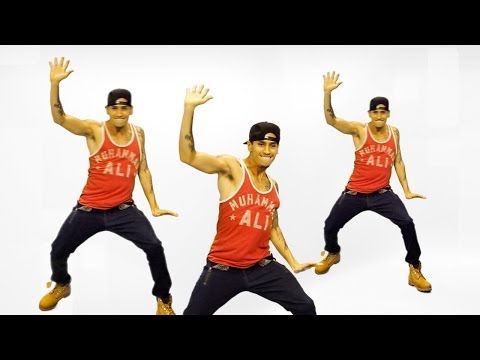 In any case, the comprehensive physical development of the child through breaking will give him a good start-up capital for further doing anything.
In any case, the comprehensive physical development of the child through breaking will give him a good start-up capital for further doing anything.
Other directions? Never!
None of the guys even think about changing the section. It is, of course, both difficult and difficult. Loads, stress. And yet, the mere opportunity to be involved in the underground culture inspires everyone without exception.
— For me, breakdancing is not dancing or sport, — shares one of the most advanced girls of the section, Karina Vlasova. - This is love.
From there, says the interlocutor, and a reserve of strength, and drive, and adrenaline, and the desire to conquer new heights.
Arrived! Got carried away! Won!
By the way, among the pupils of the “Boom” school there is a boy whose champion titles already today inspire the kids to win. And his name is Timur Salimov. Today in training he is not very active.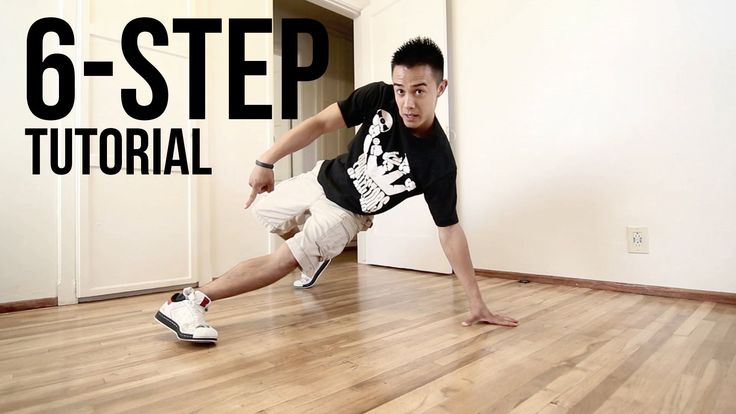 I'm sick, says the coach. But we still manage to talk to him. At first glance, Timur is a very shy guy, taciturn. He does not brag about his own successes. In general, the boy Timur in life and the b-boy nicknamed Mowgli on stage are absolutely two different people. On the dance floor, there really is some kind of transformation of the soul. A completely different form of communication with the world and with oneself can be traced. The example of Timur is a clear confirmation of this.
I'm sick, says the coach. But we still manage to talk to him. At first glance, Timur is a very shy guy, taciturn. He does not brag about his own successes. In general, the boy Timur in life and the b-boy nicknamed Mowgli on stage are absolutely two different people. On the dance floor, there really is some kind of transformation of the soul. A completely different form of communication with the world and with oneself can be traced. The example of Timur is a clear confirmation of this.
The spirit of competition, the desire to surpass the opponent in some way increases motivation. And now on the dance floor there is no longer a modest guy, there is a b-boy who perfectly feels the music, ready to surprise and win.
“Timur has one peculiarity. When he realizes that the opponent is weaker, he begins to smile kindly and play "giveaway", - says Anton Goncharov about his student. - Of course, the judges do not like this and often they reduce points for this.
Nevertheless, today Timur is one of the most titled b-boys in the region.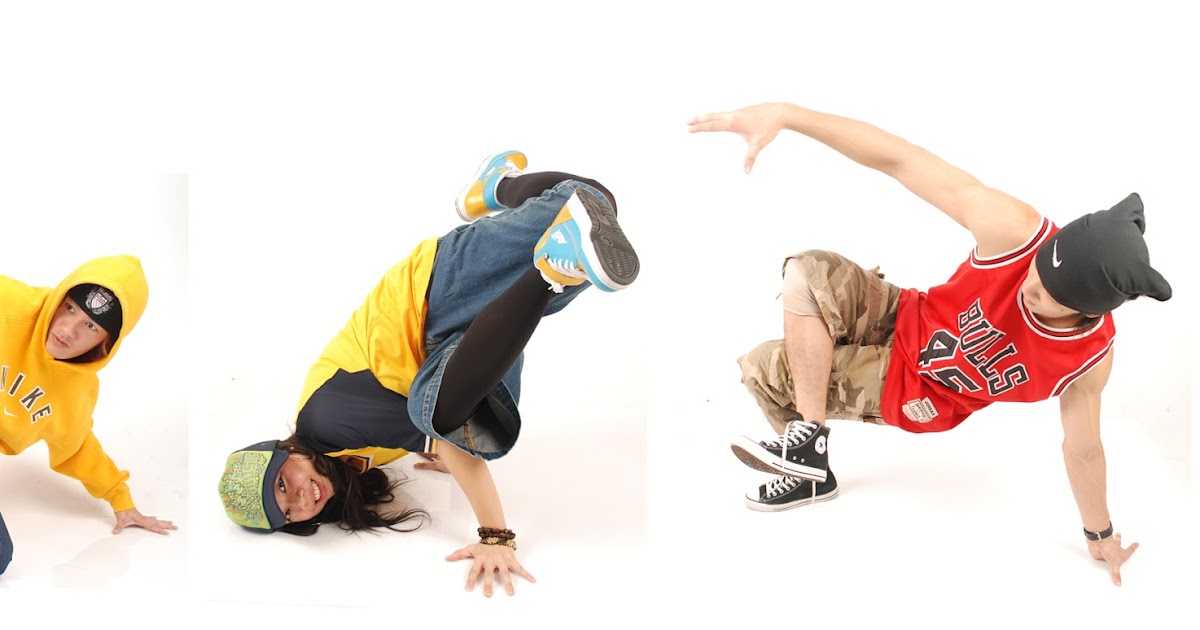 He is the winner of the All-Russian children's and youth break-dance festival "Activation" in his nomination and the champion of the district festival "Freestyle Battle".
He is the winner of the All-Russian children's and youth break-dance festival "Activation" in his nomination and the champion of the district festival "Freestyle Battle".
According to the teacher, Timur had a stagnation in the training process for a year and a half, but over the past 10 months the guy has noticeably pulled himself up, became more technical:
— At his age, you can already safely perform the basic base of elements and connections. You have to go to the dance floor fully armed. Opponents are stronger, more experienced. There are fewer of them in the district, but at the All-Russian level there are many. Therefore it is necessary to work.
By the way, the young man himself plans to connect his life with break dancing. He even intends to receive specialized education. In the next five years, she dreams of performing at the venues of the coolest break festivals: World Bboy Classic, Battle of the Year Russia, Summer Jam. Well, good luck!
When the dance floor is on fire
If a student is diligent in the learning process, you can show indulgence to his performance.
- Stop, stop, stop, - Anton Alexandrovich slows down the performance of the student during training. - You can't hear the beat at all. Entered early. Let's do it again from the beginning.
Now the final stage of training has begun - a spectacular battle of dancers. Two people go to the center of the site, which means that a battle is waiting for us. Here is the track. Dancing, and away we go! Unusual ligaments, power elements. And how much in all this expression, charisma. Certainly, it is a delight.
"Next time your exit should be harder, more interesting and more musical - improve each time" - the coach encourages his pupils for the future.
The purity of the performance of the elements indicates the diligence and determination of the dancer, Anton Aleksandrovich comments on the performances of the guys, but the dance one indicates character and individuality:
— The result is certainly needed, progress is important.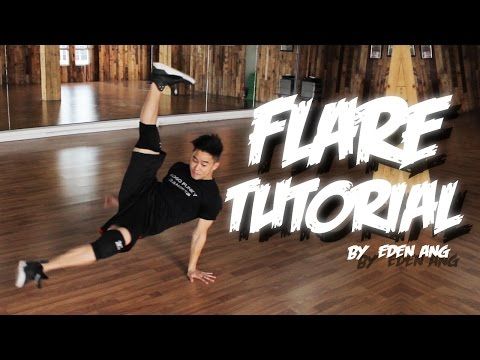 But growth is a capricious thing: somewhere there is a decline, somewhere there is stagnation. You have to be ready for everything. We always talk about this with the guys. The main thing is to see in yourself the maximum parameters for development. The strength part does not work - develop the dance part. There will be no static. I teach children to draw energy from inspiration. If today it doesn’t work out, it doesn’t mean that tomorrow you won’t overcome this barrier. It is also a moment of will. You need to look at how much you have grown relative to yourself yesterday.
But growth is a capricious thing: somewhere there is a decline, somewhere there is stagnation. You have to be ready for everything. We always talk about this with the guys. The main thing is to see in yourself the maximum parameters for development. The strength part does not work - develop the dance part. There will be no static. I teach children to draw energy from inspiration. If today it doesn’t work out, it doesn’t mean that tomorrow you won’t overcome this barrier. It is also a moment of will. You need to look at how much you have grown relative to yourself yesterday.
I do what I like
Anton Goncharov can talk endlessly about the break, captivating his interlocutor with interesting stories about the history of this dance and its meaning. He himself began to dance by chance, at the age of 16. I learned the movements myself, thought, thought out, and then proudly demonstrated:
- At that time - it was the end of the 90s - there was practically no information. Minute stories on TV, abrupt phrases from acquaintances that there is such a dance that guys in wide trousers perform. I don’t know why, but then it hooked me, fascinated me, I wanted to try it.
Minute stories on TV, abrupt phrases from acquaintances that there is such a dance that guys in wide trousers perform. I don’t know why, but then it hooked me, fascinated me, I wanted to try it.
At first, he says, he enjoyed simply being part of this culture. Of course, I wanted to express myself in society in this way. I liked that you can dance in a way that others do not know how.
“One of the most vivid memories, – shares Anton Alexandrovich, – the city of Smolensk. The roof of the nine-story building. Music, sunset and dance. It was pure underground. I liked that this style is not for everyone. It made us stand out."
By the way, the energy that Anton charged at the first championship (and he went there about a year and a half after the start of training) became the driving force on his way to improve his skills.
you teach yourself - teach others
Since 2015, Anton Goncharov has been teaching in parallel with his creative work. Introduces children and teenagers to the underground culture at the breakdance school "Boom", founded by Vladimir Charin in 2009year. The work, says the teacher, is interesting. Although it is difficult to call the work that you are passionate about work:
Introduces children and teenagers to the underground culture at the breakdance school "Boom", founded by Vladimir Charin in 2009year. The work, says the teacher, is interesting. Although it is difficult to call the work that you are passionate about work:
— Dancing is not work. This is what I live for, what I love. I want both adults and children to understand breakdance correctly. These are not fashionable dances, this is a whole philosophy. You do not just make some movements, you project your fantasy, your sense of the world onto the dance floor.
But to breakdance, you need to be not only emotionally charged, you also need to have good physical data.
The teacher says that he had a period in his life when he “dropped out” of dancing for several years. Lost shape - yes. But the desire to return and start all over again won:
— Frankly, it was difficult, and I probably still have not reached the previous level. But I'm back in the ranks, and it makes me happy.
About the school, pupils and tournaments
Today, under the guidance of Anton Goncharov, about 70 boys and girls are studying in Sovetsky and Yugorsk. The training process is well established. 2 age groups are fully functioning: 4-7 years old, 8-14 years old. Several times a year, the guys go to championships of various levels. In summer and winter, they hone their skills in a sports camp in Kazan. Enrich experience, train, attend master classes.
Already this weekend, the Ice Palace will host the first Breakdancing Championship of the Soviet District. The tournament will bring together dancers from the Ob, Nyagan, Uray, Khanty-Mansiysk, Igrim, Chelyabinsk, Kazan. The event is planned to be grandiose. About 150 participants, mega cool DJs, imperturbable judges. Do not miss. For the first time in the Soviet. Massive Battle Festival. We were promised it would be hot.
Anton Goncharov considers break lessons to be very useful.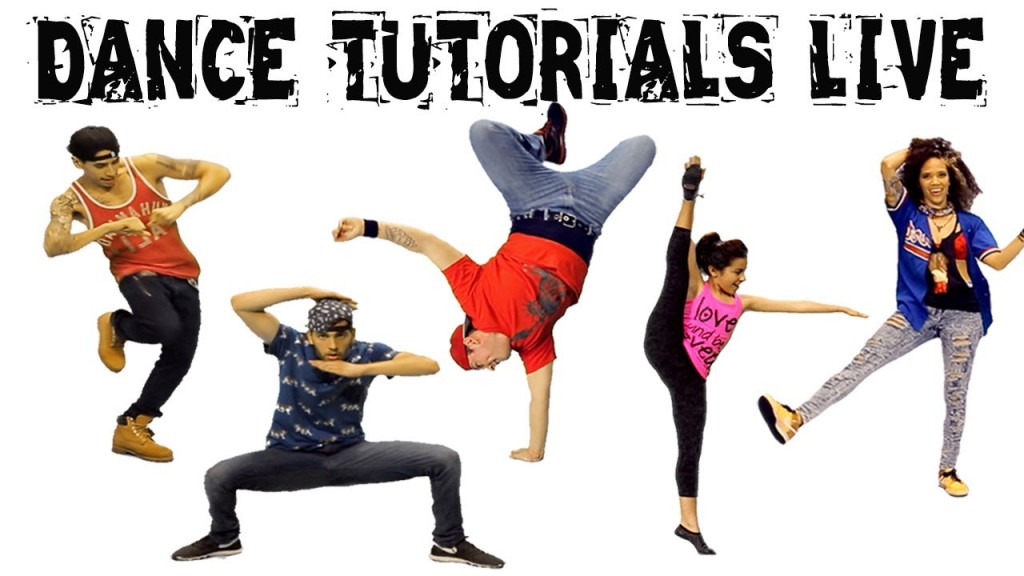 This dance brings up character, disciplines, besides, it is a good alternative to bad habits. From the point of view of the effect of a break on the human body, some pluses are also noted. For example, the lower break dance perfectly develops endurance, increases vitality, shapes the figure, strengthens the athletic torso, and also eliminates lethargy and laziness. And the upper one, in turn, pumps the shoulders and arms, strengthens the back muscles, relieves muscle clamps, blocks and hypertonicity.
This dance brings up character, disciplines, besides, it is a good alternative to bad habits. From the point of view of the effect of a break on the human body, some pluses are also noted. For example, the lower break dance perfectly develops endurance, increases vitality, shapes the figure, strengthens the athletic torso, and also eliminates lethargy and laziness. And the upper one, in turn, pumps the shoulders and arms, strengthens the back muscles, relieves muscle clamps, blocks and hypertonicity.
Street Rebel
Originating in the 1960s in the Bronx, breakdancing can rightfully be considered one of the most energetic dance styles of today. With his appearance, he divided the history of dance arts into "before" and "after". As for the history of the emergence of breaking in our country, the boom occurred in the 85th year. Since then, the "broken dance" began to slowly but surely gain popularity among the youth of those years. Today, a new generation of dancers is learning unusual chords and mastering complex elements.